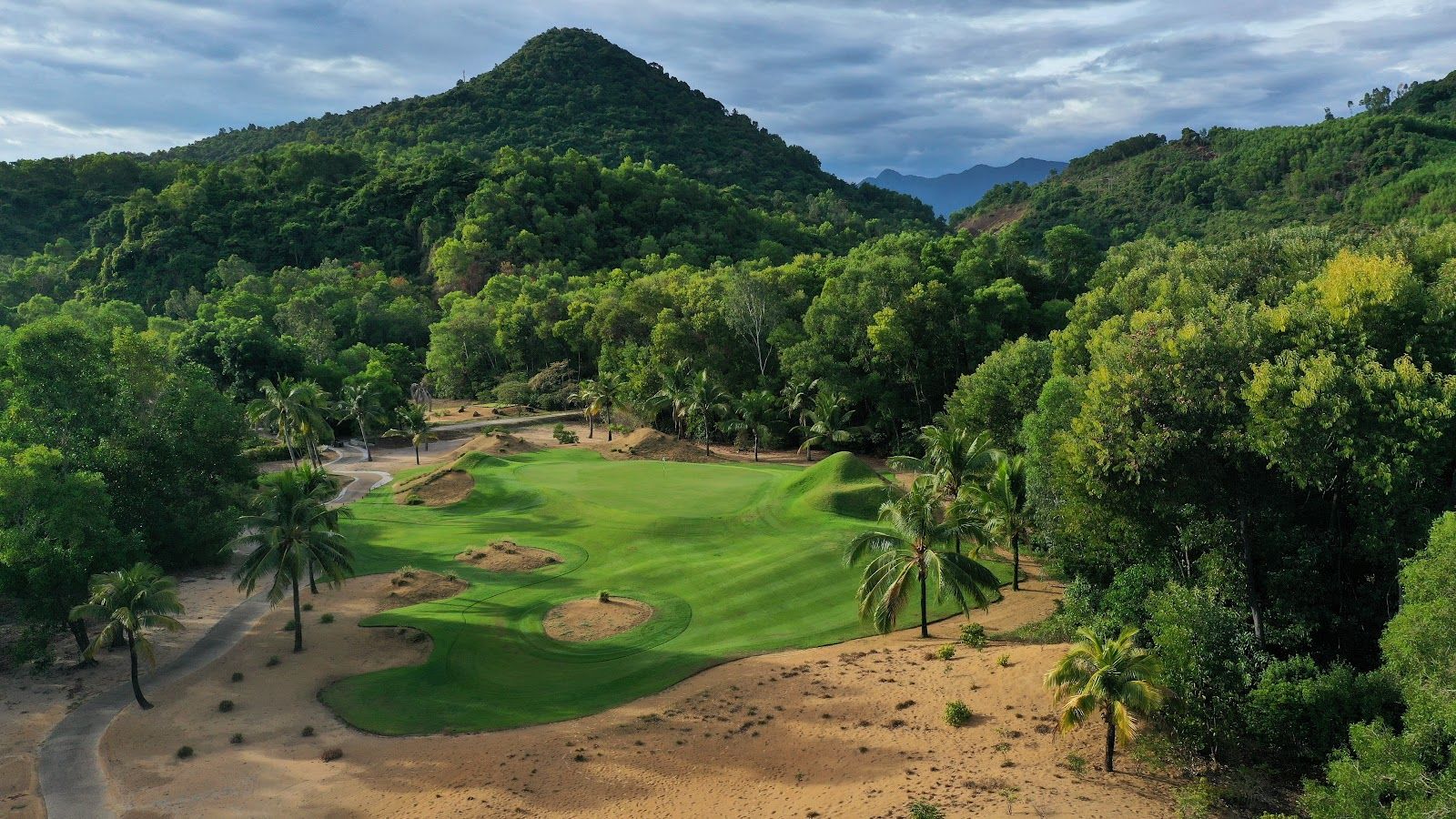
- AddressLộc Vĩnh, Phú Lộc, Thua Thien Hue 530000, Vietnam
Officially opened by its designer, 6-time Major winner Sir Nick Faldo, in March of 2013, the Laguna Lãng Cô course is situated on the East Sea coastline, midway between the former imperial capital of Hue and Vietnam’s third largest city, Danang.
This golf facility marks another milestone in the development of the Central Coast region as a major tourism destination and it forms the sporting centerpiece at an upmarket resort that includes Banyan Tree and Angsana branded hotels and other accommodation options.
The 26th worldwide design project completed by its esteemed designer, Laguna Lãng Cô nestles between mountain and sea on a wonderfully sandy strip of dune land, with some commentators calling it Faldo’s boldest and best creation so far.
The following edited extract by Paul Jansen is from Volume Six of Golf Architecture: A Worldwide Perspective. Reproduced with kind permission. To obtain a copy of the book, email Paul Daley at fswing@bigpond.net.au.
“The resort is nestled somewhat privately between sharp, rugged mountains and white, sandy beaches. A hidden gem, if ever one existed. The extent of Laguna’s isolation instantly registered on our initial site inspection (as) we parked off-site and then traipsed through jungle and rice paddy fields to reach the proposed golf course site. Just a few months prior, it was only accessible by boat. We really did feel like explorers conquering undiscovered land.
What we discovered was something special. The site had great variety, interest and it possessed a distinct character. Additionally, we were enthused by the prospect of working on sand; and there was an abundance of water everywhere. I had certainly never seen a site of such variety of features before; the only problem being that so many of the features were hidden in jungle, or were simply inaccessible.
To everyone’s delight, the sand dines – which represented about half of the golf site – had an abundance of movement. Indeed, not unlike what you would find on some of the world’s great links. We felt compelled to continue the rugged theme throughout the golf course, as well as mimicking some of the movement found in the existing dunes and surrounding mountains. We also sought to create a course that embodied certain links-like characteristics.
One of the key goals was to ensure that the golf course remained sustainable, and we aimed to achieve this through a number of methods. All landscaped areas were planted using native scrub and grass, propagated or directly planted from areas on-site. Zoysia Matrella, which accounts for around thirty hectares of the site, requires the least amount of water, mowing, pesticides and fertilisers when compared to other warm-season grasses.
But perhaps the most interesting and sustainable features are the rice paddy fields bounding the third, fourth, thirteenth and fifteenth holes. Combined, these account for around five hectares of golfing grounds, while all are maintained and harvested by the locals at no cost.”
Course Reviews
Leave a Review
This course has not been reviewed.
If you have played this course, consider .
Thanks for the review
Your review has been successfully submitted and will be reviewed for approval.
Course Reviewed
You’ve already submitted a review for this course.
Course Architect
View All
Nick Faldo didn’t start playing golf until he reached the age of 14 and it’s said he only got into the game after watching Charles Coody win the 1971 Masters tournament on his family’s new colour TV set.


